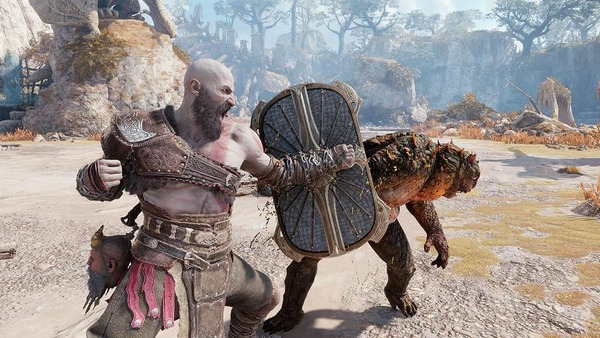Popular Now
Introduction
Valorant, Riot Games' tactical first-person shooter, blends sharp shooting mechanics with unique agent abilities. Unlike traditional shooters, Valorant challenges players not only to aim well but to coordinate, strategize, and adapt constantly. Whether you're brand new to the game or looking to level up your skills and climb the ranked ladder, this in-depth guide will walk you through how to master Valorant step by step—from setup to high-level competitive play.
1. How to Build the Perfect Settings
The first step to improvement is customizing your game settings for performance and comfort.
Mouse Sensitivity and DPI
Start by using a DPI between 400 and 800. Most professional players use low in-game sensitivity, allowing more precise movements. A common metric is about 30–40 cm of mouse movement for a 360-degree turn. This improves aiming stability in gunfights.
Crosshair and Video Settings
Customize your crosshair for clarity. Avoid flashy colors or big designs. Choose a simple dot or cross and set it to a color that stands out on most maps. As for video settings, keep graphics on low to ensure high frame rates, which directly affect shooting accuracy and input lag.

2. How to Choose the Right Agent
Valorant has four roles: Duelist, Sentinel, Initiator, and Controller. Choosing an agent that fits your strengths is crucial.
Understand Your Playstyle
-
Duelists like Jett and Reyna are great for aggressive entry and solo plays.
-
Sentinels like Sage and Killjoy hold sites and support teammates.
-
Initiators like Sova and Skye help gather intel or set up team fights.
-
Controllers like Omen and Viper use smokes and walls for area denial.
Experiment Before Specializing
Try all agent types to understand their utility. Once you find one that complements your reflexes and mindset—whether aggressive, supportive, or strategic—start specializing.
3. How to Train Your Aim Like a Pro
Mechanical skill is critical in Valorant. Consistent aim separates good players from great ones.
Daily Aim Routine
Use training tools like Aim Lab or KovaaK’s for 20–30 minutes daily. Focus on micro-adjustments and flick shots. In Valorant’s own practice range, do bot shooting, strafe shooting, and recoil control drills.
Crosshair Placement
Keep your crosshair at head level and aimed where enemies are likely to appear. Avoid looking at the ground or walls while walking. Learn to stop your movement with counter-strafing before firing for maximum accuracy.
4. How to Master Map Knowledge and Callouts
Knowing maps inside and out gives you a significant tactical advantage.
Learn One Map at a Time
Focus on a single map and master all callouts (e.g., B Heaven on Split or A Cubby on Ascent). Use custom lobbies to explore sightlines, angles, and utility spots. This boosts confidence in fights and rotates.
Utility Usage by Location
Understand where and when to use smokes, flashes, or recon abilities. For example, Sova’s Recon Dart in A Lobby on Haven can give early intel, while Viper’s wall can split a site for attack or retake.

5. How to Communicate and Work with Your Team
Solo skill only goes so far—team coordination wins games.
Effective Communication
Use your mic or in-game pings to call out enemy positions, player health, and planned actions. Keep it brief and clear. Avoid cluttering voice chat with irrelevant information, and always call for help or request trades.
Team Strategy and Leadership
Even in solo queue, take initiative. Say things like, “Let’s go slow A,” or “I’ll lurk mid while you push B.” Structured plans create confidence and rhythm for your team.
6. How to Use Agent Abilities Efficiently
Abilities make Valorant unique, but using them without thinking often causes more harm than good.
Don’t Waste Abilities
Avoid throwing utility just for the sake of using it. Every flash, smoke, or molly should serve a purpose—gathering info, denying space, or enabling a push. For example, Breach’s flash should follow a teammate entry, not be thrown randomly.
Practice Lineups and Combos
For agents like Sova, Killjoy, or Viper, learn lineups for plants and post-plants. Combine your abilities with teammates' skills—Skye flash and Raze nade can clear common angles or force movement.
7. How to Manage Economy and Buy Rounds
Understanding Valorant’s economy is critical to winning consistently.
Buy Smart, Not Impulsively
A standard full buy includes a rifle, armor, and at least one piece of utility. If your team can’t afford a full buy, consider an eco round or a half-buy. Avoid buying alone when your team is saving—sticking to team strategy is better long term.
Drop and Request Weapons
If you’re rich and your teammate is broke, buy a gun for them. This keeps the team on equal footing and prevents lopsided rounds. Use the request/donate system in the buy menu for easy coordination.

8. How to Analyze Your Gameplay and Improve
If you don’t learn from your mistakes, you’ll repeat them.
Record and Watch Yourself
Use software like OBS to record games. Look back and ask:
-
Did I overcommit or peek unnecessarily?
-
Did I use my abilities at the right time?
-
Did I communicate what my team needed to know?
Keep a Learning Log
Maintain a journal or notepad. After each session, note 1–2 things you did well and 1–2 you need to improve. Reviewing these builds awareness and tracks progress over time.
9. How to Rank Up Effectively in Competitive
Ranking up takes more than just playing well—it’s about impact and consistency.
Impact Over Kills
Focus on clutching rounds, planting/defusing the spike, and setting up teammates. A 15-kill game where you win 4 rounds with the spike is better than a 30-bomb loss where you chased kills.
Play with a Focused Mindset
Avoid queuing when tilted or tired. Play in short sessions (2–4 games), review results, then rest. Know that every game won't be winnable, but every game is a chance to learn and improve your MMR.
10. How to Maintain a Strong Mental Game
A sharp mind is as important as sharp aim.
Pre-Game Routine
Warm up with deathmatch or bots. Set simple goals like, “I will call every enemy I see,” or “I will not die solo on attack.” Small, achievable goals keep your mind engaged and help develop discipline.
Dealing with Losses and Tilt
Accept that losses are part of improvement. Don’t blame teammates. Instead, ask, “What could I have done differently?” Take breaks between games, hydrate, and keep a healthy mindset to avoid burnout.
Conclusion
Valorant demands more than just quick reflexes. Success comes from a combination of precise mechanics, smart decision-making, strong communication, and mental resilience. Whether you're aiming to climb ranked or simply want to be more effective in every match, mastering each element—settings, agents, aim, economy, teamwork—will transform you from a casual player into a consistent competitor. Stay patient, train purposefully, and you’ll see your progress unfold match by match.


















